If you’re researching a specific subject, delving into our materials can be an incredibly useful and satisfying experience. However, sometimes it can be even more fun (and surprising) when you start with a random item and see where the current takes you.
Case in point: I was recently helping Archivist Keli Schmid track down some WWII German map cases for the amazing Maps and War exhibit currently on display in the Western History and Genealogy Department. During our search, she stumbled upon sheet music titled Denver and Colorado Blues, both by Rosamund L. Little.
This in itself was not so odd, but what piqued my interest was the fact that they were both written for the Colorado Centennial…in 1959.
Now, I was nine years old in 1976, so I distinctly remember Colorado’s centennial, as it was the nation’s bicentennial as well, and quite a big deal at the time. As you might imagine, this incongruity struck me as more than a little puzzling.
Fortunately, this particular mystery wasn't too difficult to unravel, since a quick search unveiled the Rush to the Rockies, a statewide, yearlong celebration of the 100th anniversary of the Pike’s Peak gold rush. So, the centennial in question was not actually that of the state, but rather a celebration of the dramatic influx of pioneers to the region.
This was touted as a significant event at the time. The Rush to the Rockies celebration lasted all year long, and the Official Calendar of Events details special presentations throughout the state, beginning on January 1 with the Pikes Peak Centennial Kickoff in Colorado Springs and ending on December 30 with the Koshares Winter Ceremonials in La Junta. Interesting, certainly—but nothing particularly noteworthy. Then I noticed something in small print on the inside of the calendar's back cover:
TITAN: The mighty intercontinental ballistic missile in first public showing in world towers over Pioneer Village in Denver’s Civic Center as symbol of “Rush to the Rockies” from 1859 to the Space Age. [sic]
Now that intrigued me. Being the inquisitive person I am, I set out to find out more about the Titan than what was contained in the calendar's one, poorly phrased sentence. One of the first things I uncovered was a scrapbook, in which there was a clipping from a newspaper showing the missile in the process of being erected.
Delving back into the catalog, I found quite a few relevant entries and was able to determine that the rocket was unveiled on March 14, 1959. Oddly, though, there was little mention of the missile, other than a couple of grainy newspaper photographs and one article from the Steamboat Pilot, which apparently ranked the missile as only slightly more interesting than the May D&F escalators.
This struck me as odd. Perhaps people didn’t think that a missile fit particularly well with the celebration’s theme? Or, maybe it was viewed as pointless grandstanding during the height of the Cold War? Or was the Titan simply not photogenic?
Whatever the reason, there seems to be a distinct lack of photographs taken during the Titan's exhibition. Even what looked to be a promising photo collection turned out to be a bust, though the base of the missile is partly visible in the background of a shot of the Pioneer Village.
Finally, I reached out to our colleagues at History Colorado, in the hopes that maybe they might be able to sate my curiosity. Fortunately—for my sanity’s sake—Archivist Kerry Baldwin was able to find some pictures within their collection (MSS #548), which they have graciously allowed me to share with you here.
If you’re ever in the mood to jump in and see where archives can take you, or if you have more targeted research in mind, why not swing by Western History and Genealogy, and see what we can help you find. In the meantime, be sure to like our Facebook page, to keep you apprised of all things Western History related.

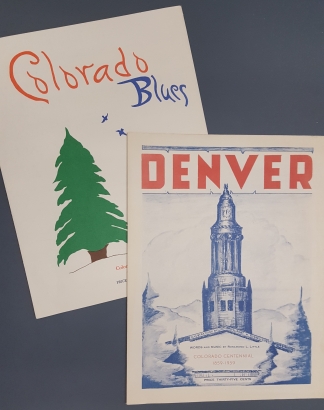
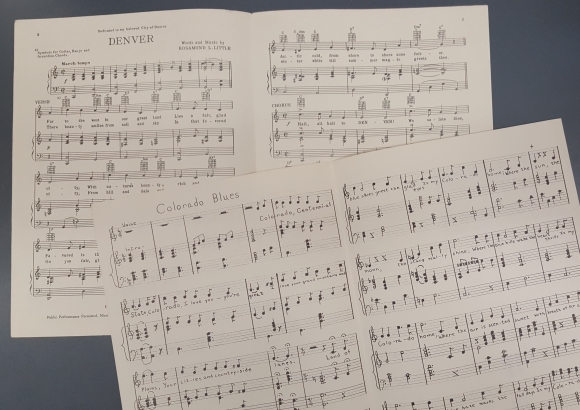
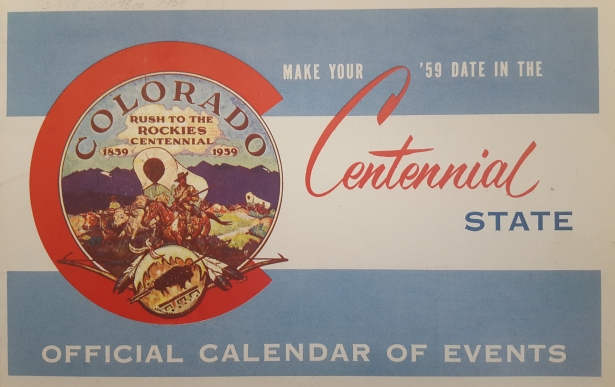
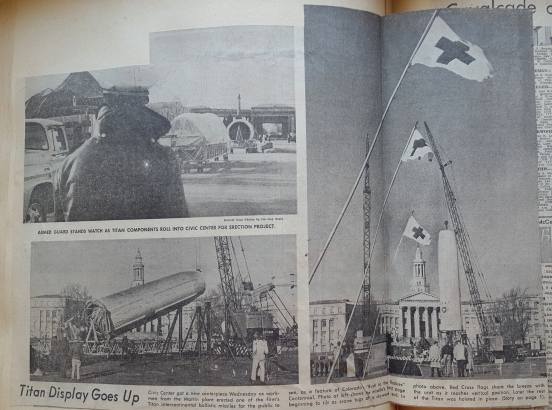

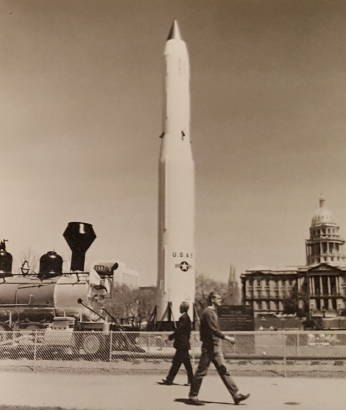
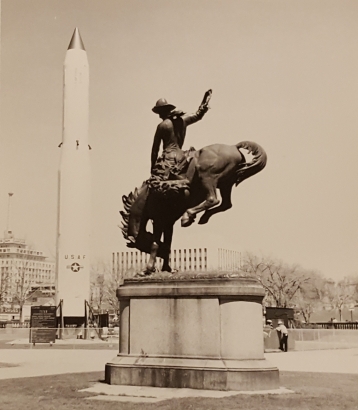
Comments
what a great article and a
what a great article and a terrific description of what many researchers experience, that wonderful "distraction" when we move from initial target to outer space or perhaps down a rabbit hole.
Thanks for your interest,
Thanks for your interest, Sandy! This is certainly a key part of what keeps our jobs so enthralling.
So, peering into the adjacent
So, peering into the adjacent rabbit hole, what (and now where) is that locomotive #268? I can't quite read the R.R. company name on the cab.
That little narrow gauge
That little narrow gauge train engine next to the missile is on display at the Gunnison Pioneer Museum. Baldwin Engine 268 is one of the most famous engines in our history. She really got around, often riding on a flatbed card on a standard gauge rail line. Cinder Ella, star of the 1952 movie, "Denver & Rio Grande"!
Great article! I’ve been…
Great article! I’ve been collecting and researching the Colorado 1959 Centennial for a number of years and recently stumbled upon another song written for the event called Here’s to Colorado; I wonder how many songs were written.
Add new comment